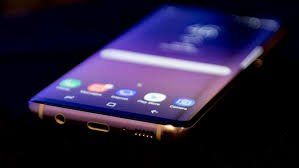Time Saving Android Tips
November 16, 2017
1. Snap between apps
Cut out delays in toggling between apps by putting Android's semi-secret fast-snap function to use. If your device runs Android 7.0 or higher, double-tap the Overview key — the square-shaped icon next to the Back and Home buttons — and you'll find yourself flipping between your two most recently used apps faster. It'll even work from your home screen for a zippy return to whatever process you had open last.
2. Slide into Quick Settings
Android's Quick Settings panel is a shortcut in and of itself — a single place with one-tap toggles to some of your device's most commonly used functions, from Bluetooth to the flashlight (and even more, if you know how to expand it).
To get a shortcut to this mecca: Just swipe down from the top of your screen with two fingers (any two — swiper's choice!). That'll skip past the standard notification panel and take you directly to the fully expanded Quick Settings section.
3. Open menus like a pro
Not many folks know it, but there's a faster way to open those three-dot overflow menus in a lot of apps.
Rather than tapping the icon to load the menu and then tapping the item you want, simply swipe downward on the icon and move your finger directly to your item of choice — without ever lifting your finger from the screen. The menu will appear as you swipe, and whatever item your finger is touching when you let go will be activated.
4. Stop disturbances without the fuss
Sometimes you need to silence your phone quickly and discreetly. Whenever that time comes, don't mess with on-screen menus and icons; just activate your phone's display, then press the device's volume-down key until the ringer volume goes all the way down.
That'll put your phone into vibrate-only mode, and you should feel a brief vibration to let you know you're there. If you want to take it a step further and go into Android's full do-not-disturb mode, in which nothing but an alarm will cause your phone to sound — assuming your phone is running 2015's Android 6.0 (Marshmallow) or higher — release the volume-down button and then press it one more time. (You'll see the confirmation of the mode change on your screen.)
Whenever you're ready to return to a normal state, simply activate your device's screen and press the volume-up button until the level lands wherever you like.
5. Refresh the web with ease
Say you're looking at a web page in Chrome. For one reason or another, you realize you need to refresh the page. What do you do?
Sure, you could open the Chrome menu and then select the refresh icon. Or you could skip a step and just swipe downward from anywhere on the page. You'll see a circular refresh symbol appear at the top of the screen as you swipe. Make sure you pull down until the arrow within the symbol turns blue, then let go. (Once you get used to the gesture, you'll find that a quick downward flick is all it really takes.)
6. Force a restart
No technology is foolproof. If your Android device ever isn't responding, press its power and volume-up buttons at the same time — even if the display is off — and hold them down together for 10 to 15 seconds. Unless something really disastrous is going on (or your battery's just dead), that'll force your phone to restart, regardless of what you were last doing.
7. Get to your camera in a flash
When a photogenic moment arises two seconds can be the difference between an unforgettable snapshot and an after-the-fact image. So don't futz around with unlocking your phone and looking for the on-screen camera icon; instead, just double-tap the device's power button to jump straight into shooting, whether your display is on or not.
That shortcut works on many popular Android phones, including Google's Pixel and Nexus devices, Samsung's most recent Galaxy gadgets (on pre-2017 models, use the physical Home button instead of the power button) and HTC's latest handsets. LG phones tend to shift the shortcut to the volume-down button, meanwhile, while Motorola phones use a double-twist motion to achieve the same effect.
8. Put notifications on notice
Next time you get an annoying notification, don't scream out in frustration. Press and hold the notification in question to hop over to some helpful advanced settings. They'll let you control exactly when and how that app is able to alert you.
9. Wake your screen with two taps
If you have a Pixel, a Galaxy S8 or Note 8 or a recent LG or HTC device, there's a decent chance your device supports a super-speedy way of waking the screen: Tap your finger on it twice. That's it! With the Samsung devices, you have to tap specifically on the always-on Home button at the bottom of the display; with the others, you can tap anywhere on the screen's surface.
(Note that on some of these devices, you may have to manually enable a "double-tap to wake" option before this'll work. Look in the Display section of your system settings to find it.)
10. Send a friendly rejection
When you get a phone call you can't or maybe just don't want to answer, look toward the bottom of the screen for a message icon or a "Send message" option.
Slide your finger up from that area, and you'll be presented with a list of ready-made rejection messages you can send to the caller while simultaneously declining his call.
11. End calls with ease
When you do talk on your phone, finding the on-screen button to end a call isn't always convenient. But Android actually has an easier way — if you know where to find it.
Open up the Accessibility section of your system settings, then activate the option labeled "Power button ends call." Now, when you're ready to say farewell, just tap your phone's power button and bask in your shortcut-aided efficiency.


